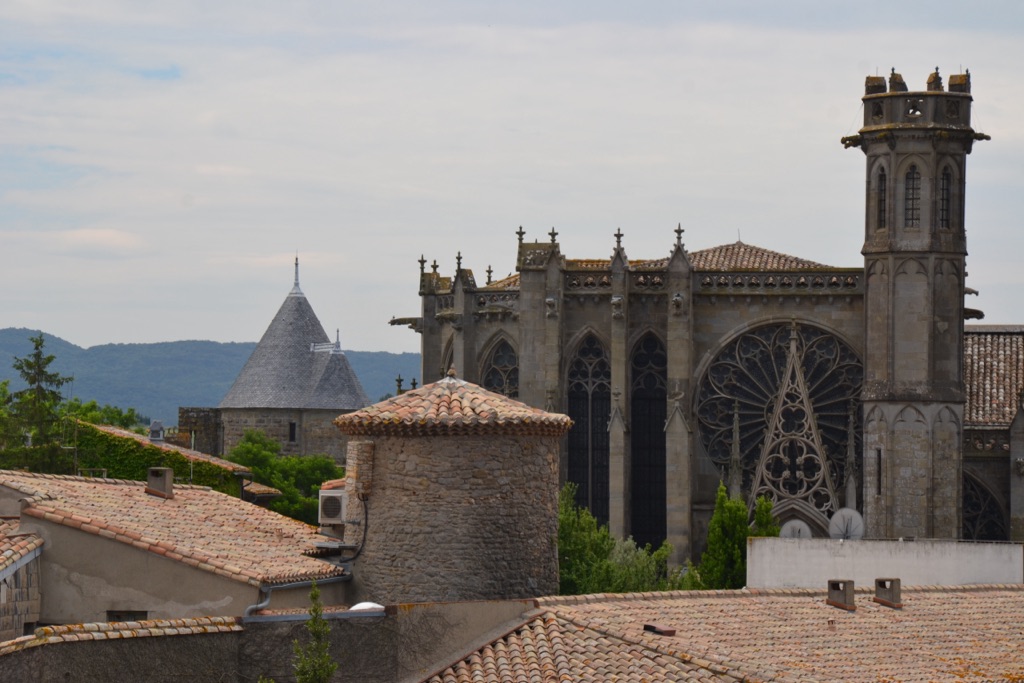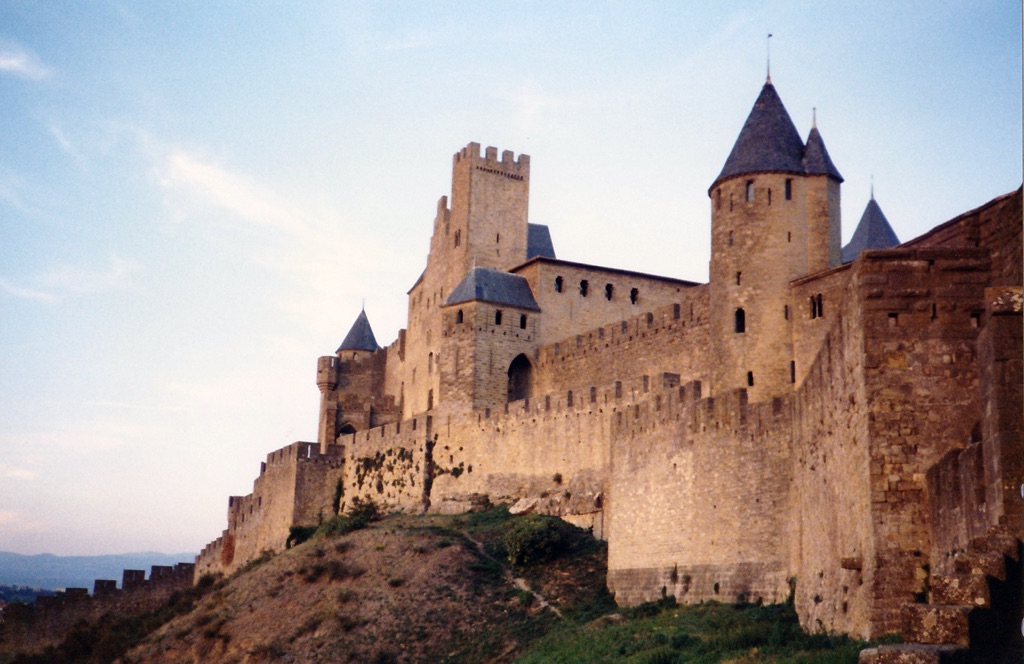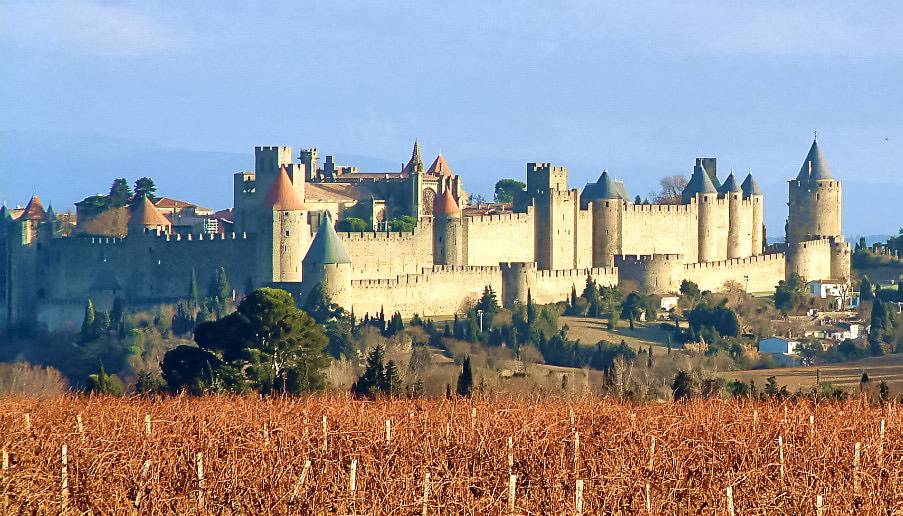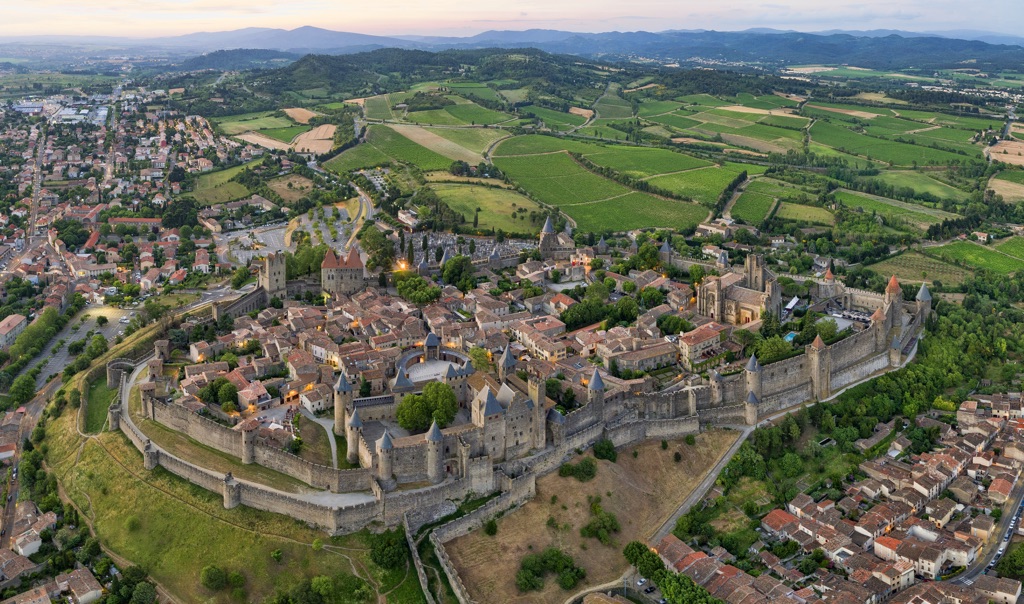Carcassonne is a fortified medieval city located in the south of France. It stands as a remarkable example of a medieval fortress, complete with walls, towers, and a castle. Carcassonne has a rich history that dates back to the Roman period. Over the centuries, it has seen numerous modifications and restorations, particularly during the 19th century under the guidance of architect Eugène Viollet-le-Duc. Today, it is a UNESCO World Heritage site, attracting visitors from around the world who come to marvel at its historical significance and architectural beauty.
Get your dose of History via Email
Historical Background of Carcassonne
The discovery of Carcassonne as an important historical site is not attributed to a single event or person. Instead, its significance has been recognized over time, thanks to its enduring presence and historical records. The Romans first fortified the hilltop around 100 BC, recognizing its strategic importance. The site was later developed during the Middle Ages, becoming a key stronghold in the region.
The Visigoths took control of Carcassonne in the 5th century, and it was later held by the Saracens. However, it was during the reign of the Trencavel family in the 12th century that Carcassonne reached its peak importance. They built the Château Comtal, the central castle within the walls, which became a symbol of feudal power.
Carcassonne played a significant role during the Albigensian Crusade in the early 13th century. It was a haven for Cathars, a religious group deemed heretical by the Catholic Church. The city withstood a siege in 1209 but eventually surrendered and came under the control of the French crown.
In the following centuries, Carcassonne lost its military significance due to the shifting border between France and Spain. By the 19th century, it was in a state of disrepair. Fortunately, the architect Eugène Viollet-le-Duc undertook its restoration, preserving the city for future generations, although his methods have been subject to debate.

Today, Carcassonne stands as a testament to medieval military architecture. It has been inhabited continuously since its founding, evolving through various historical events. Its walls have witnessed countless stories, from the struggles of the Cathars to the grandeur of the Trencavels, and the city remains a symbol of the rich historical tapestry of the region.
About Carcassonne
Carcassonne is renowned for its double-walled fortifications that stretch nearly 3 kilometers. The walls encompass the castle and the surrounding buildings, creating a formidable defensive system. The city’s 52 towers, each with its unique features, were designed to defend against various forms of medieval warfare.
The construction of Carcassonne used local materials, including sandstone and limestone. The builders employed Roman and medieval techniques, creating a complex network of walls and towers. The inner ramparts date back to the Gallo-Roman period, while the outer walls were added during the 13th and 14th centuries.
Architectural highlights include the Narbonnaise Gate, the main entrance to the city, and the Château Comtal. The castle itself is a prime example of medieval military architecture, with its own defensive walls, a moat, and a drawbridge. The Basilica of Saints Nazarius and Celsus, with its blend of Romanesque and Gothic styles, adds a religious dimension to the site.

Viollet-le-Duc’s restoration in the 19th century aimed to revive the medieval appearance of Carcassonne. However, his approach was sometimes more imaginative than historically accurate. He added pointed roofs to towers that likely had flat terraces and created an idealized version of the medieval city.
Despite these anachronisms, Carcassonne today is a captivating blend of history and restoration. Visitors can walk along the battlements, explore the castle, and immerse themselves in the medieval atmosphere. The city’s preservation allows for a tangible connection to the past, making it a cherished landmark in the history of French architecture.
Theories and Interpretations
Carcassonne has been the subject of various theories and interpretations over the years. Its purpose as a military stronghold is clear, but some aspects of its history remain shrouded in mystery. For instance, the exact role of the Cathars and the events during the Albigensian Crusade have led to much speculation.
The city’s design and construction have been analyzed to understand medieval fortification techniques. Some historians suggest that the double walls were not just for defense but also served as a status symbol, demonstrating the wealth and power of the city’s rulers.
There are debates about the accuracy of Viollet-le-Duc’s restoration work. Critics argue that his vision of the medieval past was romanticized, potentially leading to misconceptions about the city’s true historical appearance. Nonetheless, his work saved Carcassonne from ruin and has been invaluable in its preservation.

Dating of the site has been carried out using various methods, including architectural analysis and historical documentation. These studies have helped to establish a timeline for the construction and development of Carcassonne, although some periods remain less understood than others.
Theories about Carcassonne continue to evolve as new research sheds light on its past. Archaeological excavations and historical studies contribute to a deeper understanding of the site, ensuring that its story is told with as much accuracy as possible.
At a glance
Country: France
Civilization: Neolithic, Roman, Visigothic, Saracen, French
Age: Origins date back to around 100 BC
Conclusion and Sources
The information in this article has been obtained from the following reputable sources:

